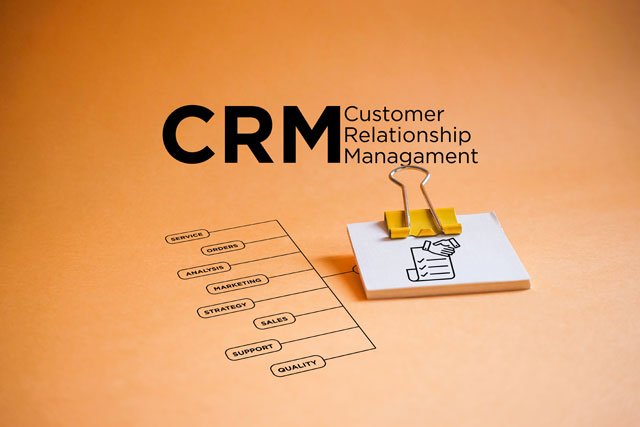Your marketing plan needs to be more than just another item on your "to do" checklist for your business opening. Marketing is how you let people know that you are in business. You really cannot just put up an open sign and hope that people will come into your business. You will get a few people if you have nearby foot-traffic, but you will never get enough to stay in business for more than a week or two.
Some people put marketing on the expense list like a utility bill or office supplies. A wise business person will realize that marketing is more than a business expense. It is a business investment.
If you are going to put your money into an investment, you want to know what your return is going to be. There is little difference in marketing. You want the most "bang for your buck" when you put money into advertising. By constantly evaluating your marketing methods and how well they work, you will soon narrow down your list of marketing methods that work for your business.
One owner of a rock and roll t-shirt shop placed several ads in newspapers. After she reviewed her demographics, she realized that her customers do not read the newspaper; they listen to the radio and use the internet. For her grand opening, she gave away tickets to a huge rock and roll concert by advertising this on the local rock radio station. Her grand opening was huge and she credits the radio. In order to track this, she asked every customer who came into the grand opening how they heard of her shop and it was either on the radio or by word of mouth.
This business owner found that her money invested in radio advertising gave her a terrific return on investment, but her newspaper advertising gave no return on investment.
The purpose behind advertising is to get the word out to your customers, and give them reasons to shop with you. Once you get a customer it actually costs less to keep the customer than it does to get new customers, and we will talk about customer service issues later. For now, we will focus on getting people into your store.
The first year of a new business is the "make or break" year. A recent study indicates that an unbelievable 95% of new businesses fold within the first year. There are usually two reasons for this. The first is lack of planning for financial support for that year. The second is the lack of an adequate customer base to keep the store in business.
We'll cover a few methods of reaching out to a customer base in order to get people to come into your store:
Press Release is an effective medial tool for promoting your store. Newspapers, magazines, radio and television stations often rely on press releases for local news and human interest stories in the area. By crafting clever press releases you will not only get your store's name mentioned by the media, but will also give people a reason to seek you out.
The press release that will be noticed and actually printed is the one that is brief, to the point, does not sound like an advertisement, and have an interesting hook.
Two good places to find examples of professional press releases are:
Take the time to evaluate good press release examples before writing your own. Your grammar needs to be very good, and your press release must be focused and interesting. You may consider hiring a freelance writer to help you with this job if you are not comfortable with writing jobs.
Press releases should include the following information:
Ø Heading with your contact information
Ø Use an enticing and interesting title in Bold Type
Ø Double space for easy reading
Ø Paragraph one should introduce you, your business, and be sure to answer the five basic journalistic questions: Who? What? When? Where? Why? Try to garner attention with your answers, but not be off the wall.
Ø What is the purpose of your press release? Grand opening? Special event? New product? Charitable cause?
Ø Use quotes to establish credibility
Ø Use an appropriate and polite closure
Website in today's environment is almost essential. Even if you do not plan to sell through your website, today's savvy shopper will be very inclined to get on the internet and look up your business before they drive all the way to see what you have to offer. Ten years ago, businesses that catered to senior citizens did not see the necessity of having a website, but since that time the segment of the population that has seen the greatest use of the internet are the senior citizens. It is a computerized world out there. Even a small website is better than none. You can also put essential information about your store on the website, and you can see just how much it is used by using tracking and customer discount coupons that are available ONLY on your website. In order to make the best use of your website, be sure to solicit e-mail addresses so that you can use e-mail marketing campaigns as your business grows.
Newsletters give you an additional opportunity to establish communication between you and your customer. The most successful newsletters are a fine balance between advertising and information that is helpful to your customers. If your newsletter is only an advertisement, most of your customers will stop reading it. Consider having the following in your newsletter:
Ø Letter to your customers from you
Ø Calendar of upcoming events
Ø New products
Ø Favorite products of your staff
Ø Recipe
Ø Handy/helpful hints specific to your customer demographics
Ø Coupon
Ø Sale information
Ø Highlight a product, features, and unique usages
Ø Community information
Sending a newsletter to your e-mail list is virtually free and does not have to be flashy. It just needs to be easy to read. Consider having an employee or a customer write an article. This helps to build community.
Relationship marketing is a direct reflection of your store by the very customers that you serve. Simple ways to advance your relationship marketing is to solicit comments and suggestions from your customers. This can be done with a suggestion box in the store, with a survey added to each bag as the customer's purchases are prepared with a discount for return, or even adding a small survey in each month's newsletter, again with a promise of a gift for every survey returned.
Continue to build your customer database with direct mailings. The first mailing of the season should give your customer an idea of what you have for the season. The second mailing is a smaller, black and white discount for end of season sale. They must return their mailing in order to get their discount. This way you can find those customers who are more likely to shop at a discount.
Create Loyalty Club Cards, VIP club, or something similar. For example with each $300 in merchandise purchased, they get $30 off their next purchase. This will help to build long-lasting relationships with your customers. You can send end of the year "thank you" gifts for some of your very best customers at the end of the year.
Use the telephone and call your customers. Or, hire a teenager to call every customer on your list, not to sell them something but to tell them something new about your store. This often results in a 20% return of customers in your store. This is a great influx of new sales.
Use a mix of advertising methods to build your customer base. Every business will have different ways of reaching out to the public that will work for them, but will not necessarily work for every business. Ask your friends about sales and marketing tactics that worked on them. Ask why it worked. Work to build long-term relationships with your customers, for it is much less expensive to keep a customer than it is to find a new one to replace them.
Wendell's marketing plan is to create flyers telling all about his new nursery and garden center, The Barn Swallow. He lists all the benefits of shopping with him:· The larger pots with more vigorous root growth,
· His unique knowledge of native plants.
· His unique ability to propagate native plants.
· The walk-through gardens that are established and ready.
· His willingness to give individualized advice to gardeners.
Wendell also has participated in the annual Farmer's Market by giving away free samples of seeds, and demonstrations on how to pot an attractive annual display for home or place of business. By doing these things, Wendell has increased his exposure to the community. His longevity in the community means that he is a familiar figure to everyone and they know that they are not talking to someone who will just disappear at will.
All of these techniques have increased Wendell's exposure for The Barn Swallow and once he opened his doors, he has not had a single day without customers.Staffing
Finding "people" people
Where do you find employees? Word of mouth is usually how most new business owners start. Your friends, family, business associates, etc. will likely know someone who might be a good person to hire. You can even let your customers know that you are looking for someone to work your store.This is where you will find your applicant pool. Now, you must sift through this applicant pool to discover who are your "people" people. Sometimes it is good to screen applicants over the phone before bringing them in for a formal interview, this saves both of you time if they are obviously not a good fit for you.
All your interviewing questions must be job related and you must avoid any sort of discrimination. You cannot ask an applicant if they have any disabilities, but you can ask if they are capable of doing specific jobs. Previous employers are only required to provide a previous employee's dates of hire and termination and their job description. They cannot give you reasons for leaving.
Some of your employees will provide references, and you will be wise to check them. While they will not be entirely objective because they are likely friends of the applicant, they can still be illuminating.
If you deal with a lot of money, you may want to perform a credit check on a potential employee. They will have to sign a document giving you permission to do this. Other employers want to perform a background check on their potential employees.
Job Descriptions
A job description should include a title (most people like this), and a description of the duties they will be expected to perform (usually in order of priority), who they are responsible to, characteristics and qualifications. Always describe each duty so that there is no room for interpretation, and give your employee a designation of how important that duty is to their job overall.Choosing the Best Front Line PossibleWhen you begin the hiring process, your job is to screen your applicants very well. Rather than just looking for a warm body to tend the store, it is in your best interest to look for workers who are highly motivated and who are already excellent customer service representatives. This will not come from your average minimum wage worker. You may consider paying your staff more, but with the clear expectation that you will expect more from each worker.
You also want to look for people to hire who share your values, who can see the vision that you have for your business, and are passionate about it. Look for upbeat and outgoing personalities who are flexible in the face of difficulty.
Your next job then is to train your workforce adequately. Most people think it is a very easy matter to give directions to their employees, but the truth is that most retailers fail in this area. Workers have to know what they are supposed to do in order to do it. If they do not know what your expectations are, they become frustrated. Frustration will then lead to job dissatisfaction and ultimately your prized employee will find another job.
Employee ManualWritten guidelines or a written employee manual will help in this regard. Here is a list of items that should be included in the employee manual. As you can see, it is a fairly comprehensive list, and will contain items that you innately know, but your employee will have no clue:
In an environment where most retail businesses consider their employees to be expendable, creating a loyal workforce is both easy and difficult. It is easy because the steps required to establish a group of employees that are happy, satisfied, and eager to work hard are not difficult. It is hard because most retailers are unwilling to do what it takes to create a loyal workforce.
What many business owners do not realize is that customer service begins within the ranks. Each employee is a customer service representative to each other employee. You as the owner, or your manager, are almost 100 percent responsible for the attitude of your store and its staff.Recent research has given rise to the belief that attitude is nearly always controllable, that is to say, you have a choice in your attitude, and you can choose to have either a good attitude or a bad attitude. How many times have you said you are in a bad mood because you "got up on the wrong side of the bed?" The fact is you decided to be in a bad mood.Why do we give such power to negative thoughts and feelings? Perhaps it is because we never considered it before. Most human beings move along, merely accepting changes in their mood as something to be taken for granted. Now that you are a business owner, you need to pay attention to this. Your choice in how to respond to a situation will be how your staff will reflect the same thing.
All too often I have heard business owners say, "My attitude is fine, but my partner (manager, employee) needs an attitude adjustment." The fact is,
THE LEADER OF THE ORGANIZATION SETS
THE TONE FOR THE ORGANIZATIONNow that you know that you need to take periodic looks into the mirror and adjust your attitude whenever necessary, let's look at ways to create a totally loyal workforce.
Compensate your workers well. Do not treat them as disposable trash. When employees are valued and compensated, they tend to be much more satisfied and will be willing to work for you for a very long time. Solicit their opinions; after all, they are the ones talking to your customers. Sometimes they even have ideas that you may not have even considered.
Happy employees make for happy customers. Customers who are happy tend to spend more at each visit, and make more frequent visits. When a store is consumed by strife, the customers tend to give wide berth because they have enough of their own problems, they don't need to hear about yours.
By making your employees your number one focus, you will be teaching your employees by example exactly how you want your customers to be handled. By providing such a unique shopping experience for your customers, you will build a loyal customer base that will see you through many years of retailing. You might not need to hire as many employees, too, if you pay the loyal ones very, very well.
Be sure to value each and every position your employees hold, and do not ask anyone to do something you are not willing to do yourself. Then, from time to time, you have to prove this philosophy by actually doing it yourself. Go ahead! Stock the shelves. Sweep the floor. Clean the bathrooms. That way you are leading by example rather than giving orders like a general.Make it FunOne store that continues to amaze me is Trader Joe's. It is no longer a small business, but some of their business practices are good enough for the small business owner to take notice. Trader Joe's has taken the mundane task of grocery shopping and turned it into an adventure. There is upbeat music playing, the workers are dressed in Hawaiian shirts and shorts to make it look as though they are on holiday. The décor of the store is more like a Caribbean island than a grocery store, a mecca for people who are hunting for bargains, natural and organic food, and an alternative to the typical impersonal grocery store experience. This is a truly unique approach to retail, and it is really working for Trader Joe's.
































